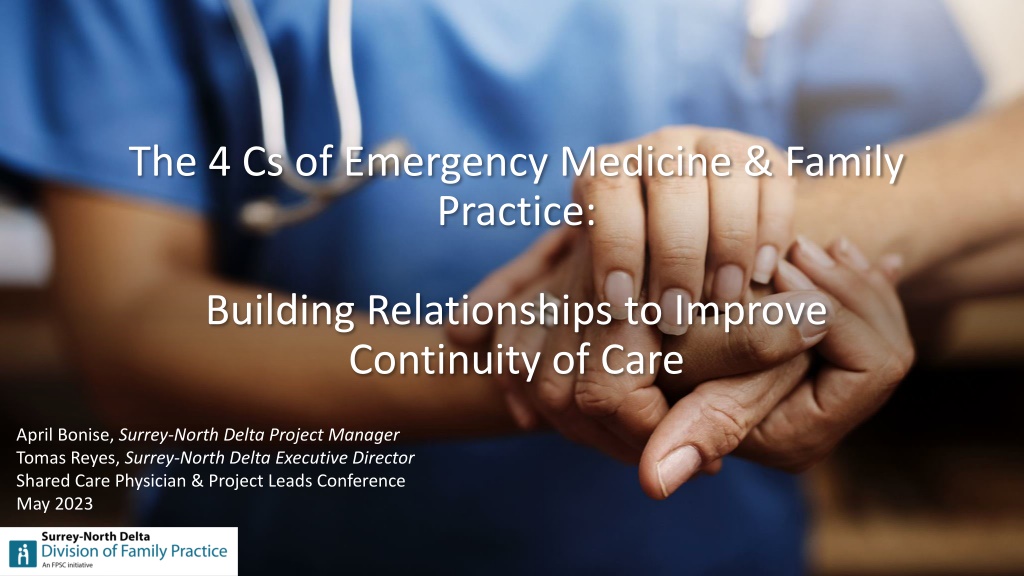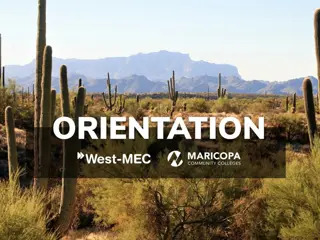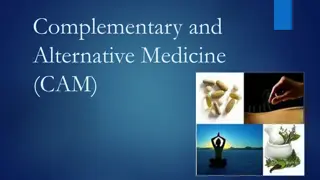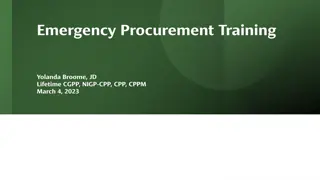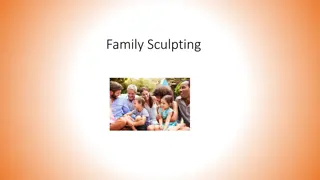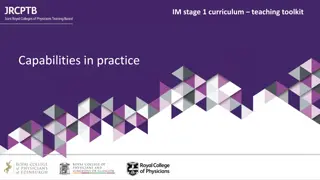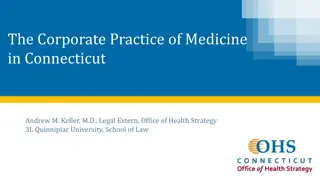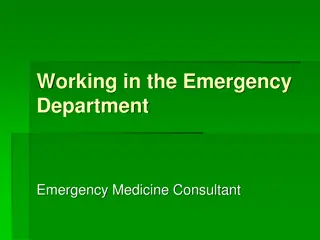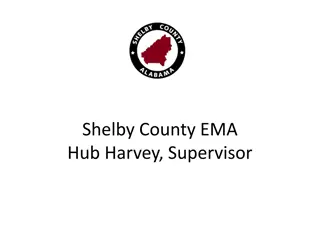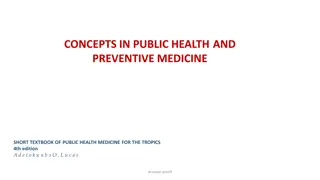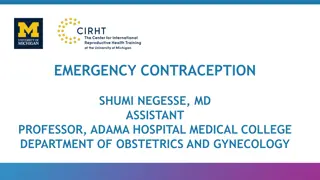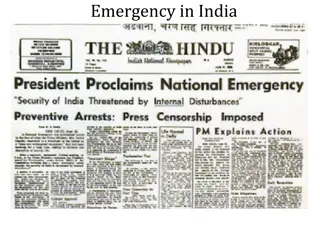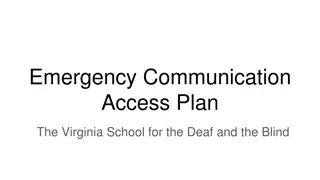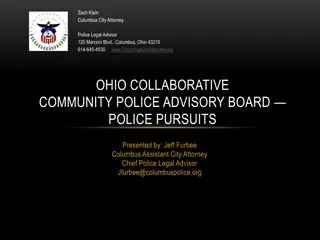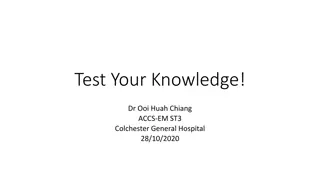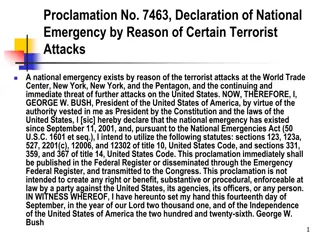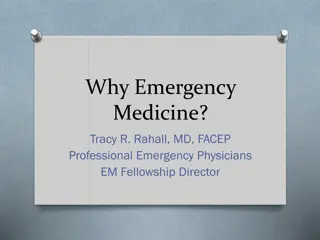The 4 Cs of Emergency Medicine & Family Practice Conference Overview
Explore the aims of the "Admission & Discharge Communication" project in Surrey-North Delta to enhance relationships among healthcare professionals, improve patient care transitions, and address challenges in emergency care settings. Key stakeholders, goals, and community statistics are highlighted.
Download Presentation

Please find below an Image/Link to download the presentation.
The content on the website is provided AS IS for your information and personal use only. It may not be sold, licensed, or shared on other websites without obtaining consent from the author. Download presentation by click this link. If you encounter any issues during the download, it is possible that the publisher has removed the file from their server.
E N D
Presentation Transcript
The 4 Cs of Emergency Medicine & Family Practice: Building Relationships to Improve Continuity of Care April Bonise, Surrey-North Delta Project Manager Tomas Reyes, Surrey-North Delta Executive Director Shared Care Physician & Project Leads Conference May 2023
Disclosures Relationship with for-profit, not-for-profit, or financial sponsors: Nothing to disclose.
OUR COMMUNITY OUR COMMUNITY City of Surrey: Population: 568,322* Number of FPs: 411 Average panel size: 2000 patients Unattached Pts: 120,000 Number of hospitalists: 75 (~approx. 25/day) Number of FPs w/ hospital privileges (excl LTC): 1 Average # of patients per day in ER: 500 *2011 Canadian Census, Statistics Canada
OUR PROJECT: OUR PROJECT: Admission & Discharge Communication (A.D.C.) Admission & Discharge Communication (A.D.C.) PROJECT GOALS: OUT OF SCOPE To improve and strengthen communication between hospital-based physicians and family physicians in the community of the Surrey-North Delta. To improve and strengthen relationships between Emergency Physicians, Family Physicians, and Hospitalists. To improve the transition of care between acute care and primary care in the Surrey- North Delta community. Unattached patients who present to the ER. Unattached patients who are discharged from the hospital. Communication challenges with other areas of the hospital, such as medical imaging or out-patient clinics. Pediatric patients presenting to the ER.
STAKEHOLDER TITLE PROJECT ROLE Dr Mark Blinkhorn Family physician- FP & LTC FP Lead Dr. Sanjay Khandelwal SMH Department Head- Hospitalist program SP Lead Dr. Aydin Tavakoli Family Physician & hospitalist FP WG member THE A THE A- -TEAM: Our Working Our Working Group Group TEAM: Dr. Brianna Noon Family Physician & hospitalist FP WG member Dr. Felix Yang Family Physician & LTC FP WG member Dr. Alex Yang Family Physician & UPCC FP WG member Dr. Jasper Ghuman Emergency medicine SP WG member Dr. Amol Lail Emergency medicine SP WG member Romelly Wilson Registration Services manager- SMH WG member
STAKEHOLDER TITLE PROJECT ROLE (RACI) Martha Cloutier SMH Executive Director Consultative, Accountable Michelle Lane Executive Director, Surrey Community Health Services, JPOCSC & Renal Services Consultative Brynn Fominoff FHA, Regional Director- Clinical Operations, Primary Care Consultative External External Stakeholders Stakeholders Christopher MacGregor Director, SMH ED Consultative Charlotte Klemencic Clinical Operations Manager- SMH ED Consultative Mary Van Osch Clinical Nurse Specialist- Emergency Network, FHA Consultative Dr. Sally Barrio SMH ED Department Head Consultative, Accountable Dr. Craig Murray FH Regional ED Lead Consultative Christopher Pinske Independent Consultant Consultative, Accountable
PROJECT OVERVIEW PROJECT OVERVIEW
The The development development of the 4 Cs of the 4 Cs of of Emergency Emergency Medicine Medicine and and Family Practice Family Practice The 4 Cs: Communication Connection Care Collegiality Video link: https://youtu.be/G6h5Wae519I
Session Design: Session Design: Thoughtful Thoughtful Designed the session to be physician- driven + interactive Asked questions early on in the planning phase: WHAT DO WE WANT THE ATTENDEES TO LEARN? FEEL? COME AWAY WITH? WHAT DO WE WANT THE TONE OF THE EVENT TO BE?
Session Design: Session Design: Thorough Thorough We thoroughly discussed possible risks and came up with mitigation strategies that were practical and quickly able to implement if needed We created a detailed facilitator s guide to provide our working group and breakout room facilitators the confidence to manage awkward silences, potentially challenging scenarios and move the conversation towards out of the box solutions.
Session Design: Session Design: Intentional Intentional Each section of the event had a specific intention aligned to our overall goals of creating a space for the 4 Cs to be demonstrated: i.e. Intention: we want to set the foundation for the audience to find common ground with one another and create a sense of shared experiences or mutual connection to one another. i.e. Intention:We want to move people from feeling connected in their shared experiences into thinking about individual solutions. i.e. Intention: Solutions-focused, drawing from what works in other areas, learning from each other, audience participation and engagement
Why was this level of planning so important? Video link: https://youtu.be/wHU83nXEZuU
The 4 Cs Event: The 4 Cs Event: Nov 30, 2022 Nov 30, 2022 113 people registered + 85 people attended including family physicians, hospitalists, and Emergency Medicine physicians. Virtual event Mix of CME credits + sessionals to reflect how the time would be spent Scenario-based Storytelling, Break-out rooms with specific discussion questions, interactive polls,
So where do we go from here? Video link: https://youtu.be/6aWLVMe54ks
